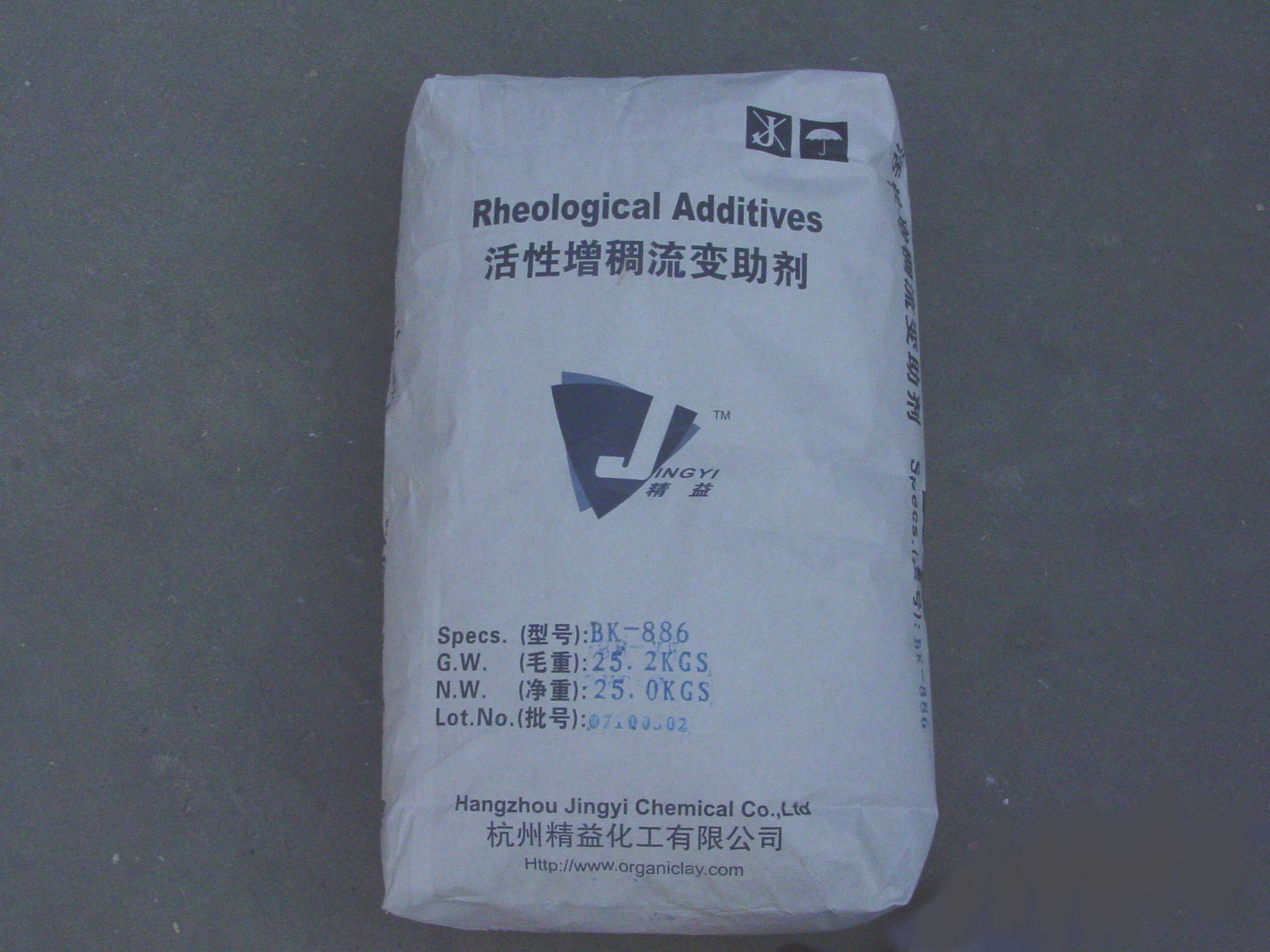
BK®-886
is an organoclay (tetraallkyl ammonium bentonite) for solvent-based systems of
low to medium polarity.
1. Advantages:
2. Typical Properties:
| Color | Appearance | Density |
Moisture (@105℃,2hrs) |
Fineness through 200 mesh |
Loss on Ignition ( @1000℃ ) |
|
Light White |
Free Flowing Powder | 1.67g/cm3 | ≤3.5% | ≥98% | ≤35% |
| ●Acrylic paint | ●Solvent epoxy paint |
| ●Alkyd paint | ●Zinc-rich paint |
| ●Baking paint | ●Nitro lacquer |
| ●Foundry paint | ●Adhesive |
| ●Polyester paint | ●Lubricating grease |
| ●Road paint | ●Cosmetics |
| ●Silica paint | ●Inks |
4. Incorportions:
BK®-886 belongs to the conventional type of organoclay group, which requires mechanical
energy, shear forces applied with a goods dispersion equipment, and a chemical
(polar) activator to reach the proper level of delamination of
the organoclay platelet
stacks.
Polar Activator: Dosage of polar activator ( such as propylene carbonate, 95%ethanol ,
acetone or 95% methanol) is 30%-60% by weight of BK®-886.
It is
always recommended to determine the proper level of addition by experiment.
Either defect or excess of chemical activator would result in poorer viscosity
development.
5. Recommended
Levels:
The amount of BK®-886 rheological additive required depends upon the type of
organic system and the degree of thickening or other properties desired.
Addition levels are typically between 0.2%-2.0% based on the total formulation
weight.